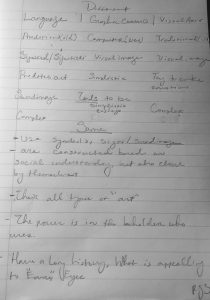General Linguistics.
From reading the text, I learned that the two terms semiology and linguistics are related but have different functions. After several readings, I found that semiology deals with signs, while linguistics is the scientific study of language. Also, semiology shows what constitutes signs, the law governing them and the idea from the perspective of culture while linguistic is a part of the general science of semiology . Although it was not clear when I first read the text, I found that language is essential since it is a system of signs expressing ideas; therefore, it becomes compatible with the aspect of writing, symbolic rites, military signals or polite formulas.
Use of Signs in Everyday Language.When studying Signs, I found that they are an important aspect of life to communicate a specific idea effectively. The combination of a concept and sound-image without involving any form of speech is a sign that signifies a fact or illustration . I my daily life, I come across the need to use sign to deliver a message or emphasize a certain issue. I have seen signs being used as in traffic lights, zebra crossing and waving a hand to say goodbye or even clapping hands to appreciate something or congratulate an accomplishment.
Signs, Signifiers, and the Signified uses in Communication.In general communication, the sign emerges from a combination of signifier and signified to portray a particular concept. I come across signifier while reading and found that it can be termed as the form which the sign takes, and the signified is the concept the form takes . For instance, I can say that since a sign has both signifiers and signified, a sign with the word “Closed” when invented in a shop’s door becomes the signifier, and signified impression is “the shop is closed for business”.
Language, Graphic Communication and Visual arts Relationship.Finally, I found the concepts of language, graphic communication, and visual arts are related as they are involved in communicating a particular idea. From my personal experience and reading the text, I have learned that graphic communications use language through signs in designed visual cues to transmit a message to the viewers . Either the graphic or visual art communication is used extensively through the use of contours, shapes, color and texture not only to portray a message but also, to show emotions, experience, altitude or concept.






